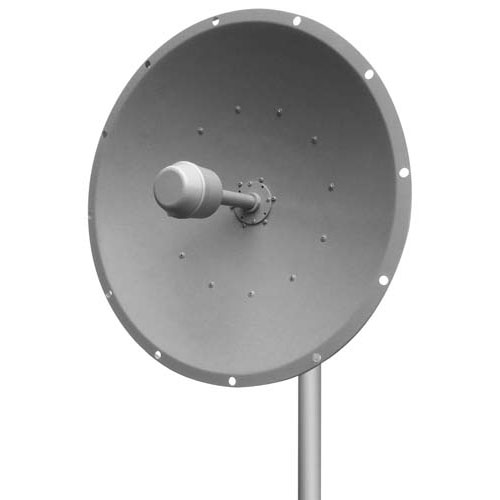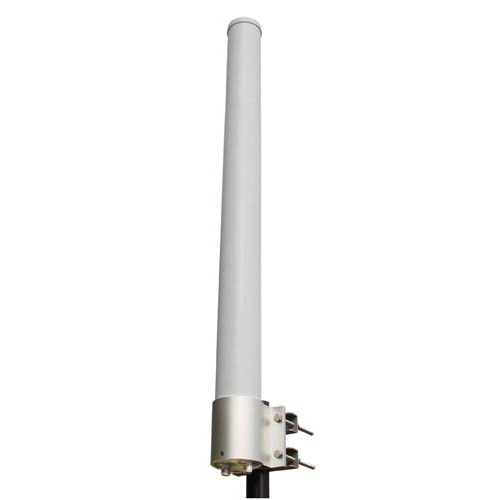Antenna gain is a very important part of antenna knowledge structure, and of course, it is also one of the important parameters for antenna selection. The antenna gain also plays a great role in the operation quality of the communication system. Generally speaking, the improvement of the gain mainly depends on reducing the lobe width of the vertical radiation, while maintaining the omnidirectional radiation performance in the horizontal plane.
1、 Definition of antenna gain:
The ratio of the radiation power flux density of the antenna in a specified direction to the maximum radiation power flux density of the reference antenna at the same input power.
→ Pay attention to the following points:
(1) Unless otherwise specified, antenna gain refers to the gain in the maximum radiation direction;
(2) Under the same conditions, the higher the gain, the better the directivity, and the farther the radio wave travels, that is, the greater the coverage distance. However, the width of wave velocity will not be compressed, and the narrower the lobe, the worse the uniformity of coverage.
(3) The antenna is a passive component and cannot generate energy. Antenna gain is just the ability to effectively concentrate energy to radiate or receive electromagnetic waves in a specific direction.
2、 Calculation formula of antenna gain
We can learn from the definition of antenna gain that antenna gain is closely related to antenna pattern. The narrower the main lobe, the smaller the side lobe, and the higher the gain.

2.4GHz 22dBi Bipolar/Cross Polarized MIMO Parabolic Antenna
(1) For parabolic antenna, its gain can be approximately calculated by the following formula:
G(dBi)=10Lg{4.5 × (D/ λ 0)^2}
*Note:
D: Paraboloid diameter
λ 0: Central working wavelength
4.5: Statistical empirical data

2.4 GHz 13 dBi Bipolar Omnidirectional MIMO Antenna – N-type Female Connector
(2) For vertical omnidirectional antenna, the following formula can also be used for approximate calculation:
G(dBi)=10Lg{2L/ λ 0}
*Note:
50: Antenna length
λ 0: Central working wavelength
3、 Gain and transmit power
The radio frequency signal output by the radio transmitter is transmitted to the antenna through the feeder (cable) and radiated out by the antenna in the form of electromagnetic wave. When the electromagnetic wave arrives at the receiving place, it is received by the antenna (only a small part of the power is received) and sent to the radio receiver through the feeder. Therefore, in the wireless network engineering, it is very important to calculate the transmission power of the transmitter and the radiation capacity of the antenna.
The transmission power of radio waves refers to the energy within a given frequency band. There are usually two kinds of measurement standards:
Power (W): linear level relative to 1 Watts.
Gain (dBm): relative to the proportional level of 1 milliwatt.
→ The two expressions can be converted to each other:
DBm=10 x log [power mW]
MW=10 ^ [gain dBm/10 dBm]
In wireless systems, antennas are used to convert current waves into electromagnetic waves. During the conversion, the transmitted and received signals can also be “amplified”. The measurement of this energy amplification is called “Gain”. The antenna gain is measured in “dBi”.
Since the electromagnetic wave energy in the wireless system is generated by the transmission energy of the transmitting equipment and the amplification and superposition of the antenna, it is better to measure the transmission energy with the same measurement – gain (dB), for example, the power of the transmitting equipment is 100mW, or 20dBm; If the antenna gain is 10dBi, then:
Total transmit energy=transmit power (dBm)+antenna gain (dBi)
= 20dBm + 10dBi
= 30dBm
Or: = 1000mW = 1W
[3dB rule]
→ Every dB is very important in a “low power” system, especially the “3dB rule”.
Every 3dB increase or decrease means that the power is doubled or halved:
-3 dB=1/2 power
-6 dB=1/4 power
+3 dB=2x power
+6 dB=4x power
For example, the wireless transmission power of 100mW is 20dBm, while that of 50mW is 17dBm, and that of 200mW is 23dBm.

